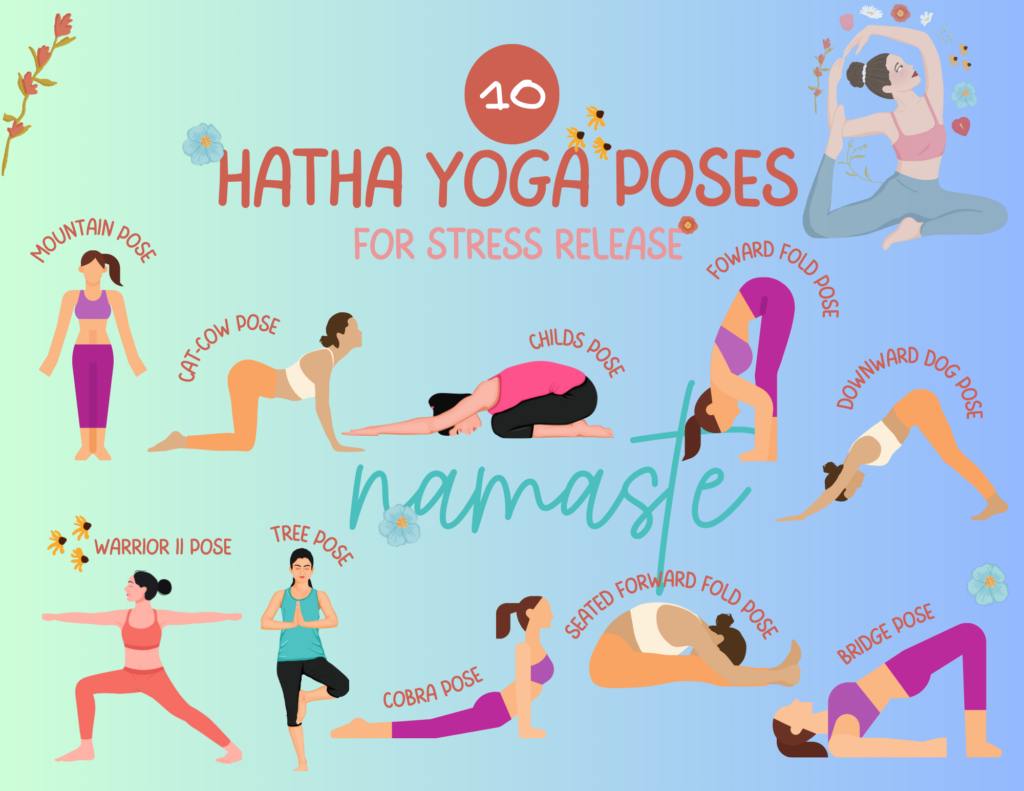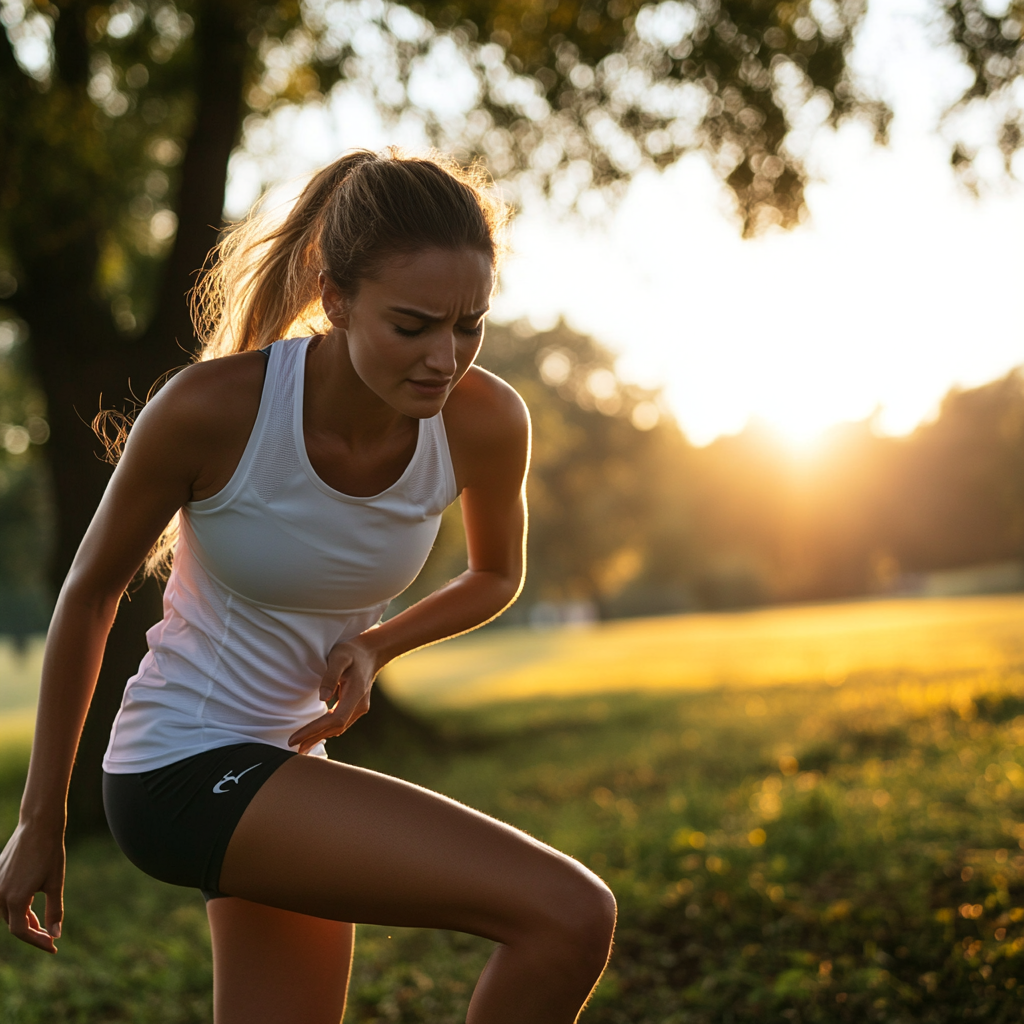
Stressed? It’s time to unroll your yoga mat and take a deep breath. These Hatha yoga poses to reduce stress is perfect for those looking to combine mindful movement and stress relief. By practicing these 10 essential Hatha yoga poses, you can ease physical tension, reset your mind, and invite tranquility into your daily routine.
Each pose below includes detailed instructions for proper alignment, printable guidance, and links to images to help you perfect your posture.
What Is Hatha Yoga?
Hatha yoga is one of the most traditional and foundational styles of yoga. It emphasizes holding poses for longer durations, combining these asanas with pranayama (breathwork) and meditation. Ideal for beginners, Hatha yoga allows you to slow down, connect with your breath, and focus on mindful movement—making it perfect for stress management.
Benefits of Hatha Yoga Poses to Reduce Stress
- Releases Tension: Loosens tight muscles caused by stress.
- Calms the Mind: Combines breathwork with movement to reduce anxiety.
- Improves Sleep: Promotes relaxation for a good night’s rest.
- Boosts Mood: Encourages mindfulness and inner peace.
Now that you know the basics, here are 10 Hatha yoga poses to reduce stress and help you unwind.
1. Mountain Pose (Tadasana): Improves posture and releases tension
Hatha Yoga Poses to Reduce Stress
How It Helps: Ground yourself and improve posture to release tension.
Mountain Pose Mountain Pose, also known as Tadasana in Sanskrit, is a foundational posture in many styles of yoga. It may seem simple at first glance – standing with feet hip-width apart and hands at your sides – but when done correctly, this pose can provide numerous benefits for both the mind and body.
Physically, Mountain Pose helps to improve posture by aligning the body’s natural curves. By engaging the core muscles and lengthening the spine, it can also help to relieve tension in the neck and shoulders. Regular practice of Mountain Pose can also strengthen the legs and feet, improving balance and stability.
But beyond its physical benefits, Mountain Pose is also a powerful tool for cultivating mindfulness and inner calm. As you stand tall with your eyes closed, you can focus on the sensation of your feet grounding into the earth, and the gentle rise and fall of your breath. This can help to quiet the mind and bring a sense of stillness and presence.
In addition, Mountain Pose can serve as a foundational posture for other poses in yoga practice. It is often used as a starting point for sun salutations, providing a strong and stable base from which to move into other poses. By mastering this pose, you can build a solid foundation for your overall yoga practice.
So next time you find yourself standing in Mountain Pose, take a moment to appreciate its simplicity and power. Embrace this opportunity to align your body and mind, finding balance and peace within yourself. With regular practice, Mountain Pose can become a source of strength and stability in your daily life. Use it as a reminder to stand tall, grounded, and present, even amidst the chaos of our ever-changing world.
Remember, yoga is not just about the physical movements and poses – it’s also about connecting with yourself and finding inner peace. So let Mountain Pose be your guide in this journey towards mindfulness and self-discovery. Embrace its stillness and find your own sense of calm within the chaos. Namaste.
Steps:
- Stand with feet hip-width apart, arms by your sides.
- Press your feet firmly into the ground.
- Draw shoulders back and down while lifting your chest.
- Reach the crown of your head upward, elongating your spine.
- Rest hands by your sides or bring them overhead for a stretch.
Hold for 5-10 breaths.
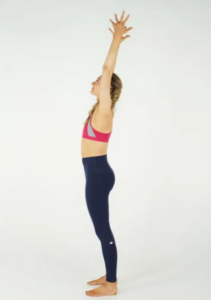
2. Cat-Cow Stretch (Marjaryasana to Bitilasana): improves spinal flexibility and digestion
Hatha Yoga Poses to Reduce Stress
How It Helps: Eases back tension and improves spinal flexibility. This was my favorite pose to do during pregnancy that helped with integestion as well as build core muscles in a safe way.
Cat-Cow Pose: A Simple Yet Powerful Yoga Pose for Mind and Body
Yoga has been practiced for thousands of years and is known to have numerous benefits for both the mind and body. One popular pose that is often included in yoga sequences is the Cat-Cow pose.
The Cat-Cow pose, also known as Marjaryasana/Bitilasana, is a simple pose that can have powerful effects on both your physical and mental well-being. The name comes from its resemblance to a cat stretching and arching its back, followed by a cow’s gentle grazing motion.
To perform this pose, start on your hands and knees with your wrists directly under your shoulders and knees under your hips. As you inhale, drop your belly towards the mat, lift your head and tailbone towards the ceiling while keeping your shoulders relaxed. This is the “cow” part of the pose.
As you exhale, round your spine, tucking in your chin and tailbone while pressing your palms into the mat. This is the “cat” part of the pose. Repeat this movement for several breaths, synchronizing it with your inhales and exhales.
The Cat-Cow pose has physical benefits such as improving spinal flexibility, massaging internal organs, and strengthening core muscles. It also helps to release tension in the neck, back, and shoulders.
On a mental level, this pose can help to calm the mind and relieve stress and anxiety. By focusing on deep breathing and mindful movement, you can bring a sense of balance and harmony to your mind and body.
To deepen the stretch, you can add some variations such as lifting one arm or leg off the ground while in the Cat pose, or arching your back even more in the Cow pose. Remember to always listen to your body and modify any movements as needed.
Incorporating the Cat-Cow pose into your daily routine can have numerous benefits for both physical and mental well-being. It is a great way to start or end your day, or even take a break during work hours.
Now that you have learned how to do this simple yet powerful yoga pose, why not give it a try? Take a few moments every day to connect with your breath and move through these poses, bringing a sense of balance and harmony to your mind and body. You may be surprised at the difference it can make in your overall health and well-being.
So why wait? Start incorporating the Cat-Cow pose into your daily routine today and experience the positive effects for yourself. Remember, creating from chaos starts with finding inner peace and balance. And what better way to do that than through this gentle yet effective yoga pose? So grab your mat, find a quiet space, and give yourself the gift of self-care with this rejuvenating pose.
And don’t limit yourself to just practicing it at the beginning or end of your day. The Cat-Cow pose can also be a great way to take a quick break during work hours. Take five minutes to step away from your desk, stretch out your body, and reset your mind. You will come back feeling refreshed and ready to tackle whatever tasks lie ahead.
Incorporating simple yet powerful practices like the Cat-Cow pose into our daily lives can have a profound impact on our overall well-being. So let’s continue to create from chaos by finding moments of peace and balance within ourselves. And remember, it all starts with taking care of ourselves first. So next time you feel overwhelmed or stressed, take a moment to find a quiet space, and give yourself the gift of self-care with this rejuvenating pose.
As we continue on our journey of creating from chaos, let’s not forget that self-care is an essential part of that process. By prioritizing our physical and mental well-being, we are better equipped to handle whatever challenges come our way. And the Cat-Cow pose is just one simple yet effective tool we can use to support ourselves along the way.
So whether you’re a beginner or an experienced yogi, make it a habit to incorporate the Cat-Cow pose into your daily routine. Your mind and body will thank you for it. And remember, self-care is not selfish. It’s essential for our overall well-being and the ability to create from a place of calm and clarity.
To practice this pose, start on your hands and knees with your wrists directly under your shoulders and your knees hip-width apart. As you inhale, arch your back and lift your head up towards the ceiling while dropping your belly towards the ground. This is the “cow” part of the pose.
Then as you exhale, round your spine upwards like a cat, tucking in your chin towards your chest. Repeat this flow several times, syncing each movement with your breath. You can also add in other movements such as circling your hips or wagging your tailbone to further release tension in the body.
This pose not only helps to alleviate physical tension, but it also allows us to tune into our breath and connect with our bodies. In this way, we can release any negative thoughts or emotions that may be holding us back from creating from a place of peace and clarity.
Remember, taking care of ourselves is not selfish. It’s necessary in order for us to show up fully and authentically in our creative endeavors. So don’t hesitate to take a moment for yourself and practice the cat-cow pose whenever you feel overwhelmed or stressed. Your mind and body will thank you, and your creativity will thrive as a result.
Steps:
- Start on all fours with wrists under shoulders and knees under hips.
- For Cat Pose (Marjaryasana): Round your spine, tuck your chin, and draw your belly button toward your spine.
- For Cow Pose (Bitilasana): Arch your back, lift your head and tailbone toward the ceiling, and drop your belly.
- Alternate between Cat and Cow with each inhale and exhale.
Repeat for 5 deep breaths.
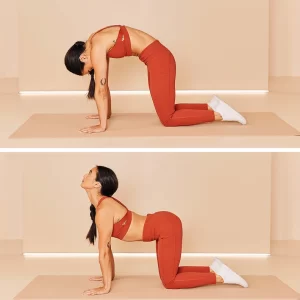
3. Child’s Pose (Balasana): Reliefs lower back, hips and shoulder tension and instills relaxation and stress
Hatha Yoga Poses to Reduce Stress
How It Helps: Relieves tension in the lower back, hips, and shoulders.
Child’s Pose Child’s Pose, also known as Balasana in Sanskrit, is a simple yet powerful yoga pose that can be practiced by anyone, regardless of age or physical ability. It is often used as a resting position during a yoga practice, but it can also be practiced on its own for deep relaxation and stress relief.
To perform Child’s Pose, begin by kneeling on the floor with your knees hip-width apart and your toes touching. Slowly sit back onto your heels and place your forehead on the ground in front of you. Your arms can rest alongside your body, palms facing up, or you can stretch them out in front of you.
As you sink deeper into the pose, focus on breathing deeply and allowing any tension or stress to melt away. Feel the gentle stretch in your hips, thighs, and lower back.
Child’s Pose is a great way to release any built-up tension in your body, especially after a long day at work or sitting in front of a computer. It can also be used as a calming pose during times of emotional distress or anxiety.
In addition to its physical benefits, Child’s Pose also has mental and emotional benefits. The posture encourages introspection and helps to quiet the mind, making it an ideal pose for meditation or reflection.
While practicing Child’s Pose, remember to listen to your body and make any necessary adjustments to ensure you are comfortable. This pose should never cause pain, so if you experience discomfort, ease out of the posture slowly.
Take some deep breaths and allow your body to relax into the pose. As you sink deeper into the stretch, focus on your lower back and feel any tension or stress slowly dissolve away.
Incorporating Child’s Pose into your daily routine can help alleviate lower back pain and promote overall relaxation and well-being. So next time you need a break from the chaos of life, don’t forget to take a few minutes to practice this simple yet powerful posture. Your mind and body will thank you for it. Happy stretching!
Steps:
- Kneel on the mat with big toes touching and knees apart.
- Fold forward, extending your arms out in front of you.
- Rest your forehead on the mat and relax your shoulders.
- Breathe deeply into your back and hips.
Hold for 1-2 minutes or longer.
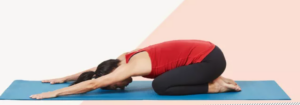
4. Standing Forward Bend (Uttanasana): Stretches hamstrings and improves flexibility
Hatha Yoga Poses to Reduce Stress
How It Helps: Stretches the hamstrings and calms the mind.
Standing Forward BendThe Standing Forward Bend, also known as Uttanasana in Sanskrit, is a popular yoga pose that can help improve flexibility and strengthen the legs, back, and core muscles. It can be practiced on its own or as part of a flowing sequence.
To perform this pose, start standing with your feet hip-width apart and your hands resting at your sides. Take a deep breath in and as you exhale, slowly bend forward from the hips while keeping your back straight. Let your head hang towards the ground and reach for your toes or the floor with your hands.
If you’re unable to reach your toes or the ground comfortably, you can place blocks or books in front of you for support. Remember to keep a slight bend in the knees to avoid putting too much strain on the hamstrings.
As you hold this pose, focus on lengthening your spine and deepening your breath. Feel the stretch in your legs and back, but be mindful not to push yourself beyond what feels comfortable.
Uttanasana can also have a calming effect on the mind, making it a great pose for relieving stress and anxiety. As you surrender into the forward fold, allow any tension or worries to release from your body and mind.
To come out of the pose, slowly roll up one vertebra at a time until you’re standing upright again. Take a moment to feel the effects of this pose before moving onto your next sequence or posture.
Remember to always listen to your body and modify as needed. With consistent practice, this pose can help improve flexibility in the hamstrings and relieve any tightness or discomfort in the lower back. So keep showing up on your mat and finding peace within the chaos through yoga. Namaste.
Steps:
- Stand tall with feet hip-width apart.
- Hinge forward from the hips, keeping your spine elongated.
- Allow your arms to hang or place them on your shins for support. Slightly bend your knees if needed.
- Relax your head and neck.
Hold for 5-10 breaths.
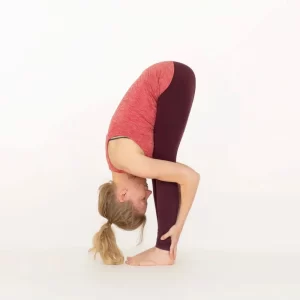
5. Downward-Facing Dog (Adho Mukha Svanasana): Eases back stiffness and increases strenth and flexibility
Hatha Yoga Poses to Reduce Stress
How It Helps: Eases back stiffness while rejuvenating your entire body.
The Adho Mukha Svanasana, or Downward Facing Dog pose, is a foundational posture in many yoga practices. It is often used as a transitional pose between other poses and can also be held for longer periods of time to increase strength and flexibility.
This posture has numerous benefits for both the mind and body. It helps improve circulation, strengthen the arms and legs, relieve tension in the neck and shoulders, and can even help alleviate mild depression and anxiety.
However, it’s essential to listen to your body while practicing this pose.
Steps:
- Begin on all fours, then tuck your toes under.
- Lift your hips high, straightening your legs to form an inverted “V” shape.
- Press palms into the mat and shift weight evenly across hands and feet.
- Relax your head and gaze toward your legs.
Hold for 5-10 breaths.
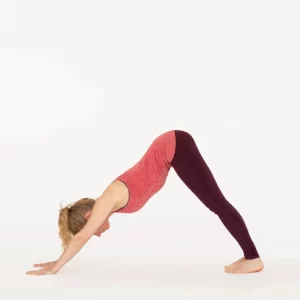
6. Warrior II (Virabhadrasana II): Opens the hips and builds strength and stability
Hatha Yoga Poses to Reduce Stress
How It Helps: Builds strength while fostering focus and stability.
Warrior II, or Virabhadrasana II, is a powerful standing pose in yoga that can help to build strength and stability in the body while also opening up the hips and increasing flexibility. It is named after the Hindu mythological warrior, Virabhadra, who was created by Lord Shiva to destroy evil.
Warrior II is a powerful pose that helps to build strength in the legs, open the hips, and improve balance. It also promotes focus and concentration, making it a great addition to any yoga practice.
Remember to listen to your body and modify the pose as needed. If you experience any discomfort or pain, ease out of the pose slowly and consult with a certified yoga instructor for further guidance.
Continue exploring different variations of Warrior II as you continue your yoga journey, allowing yourself to find strength, stability, and peace within this powerful pose. Namaste.
Steps:
- Step one foot forward into a lunge; keep the back leg straight.
- Extend arms parallel to the floor, palms facing down.
- Gaze over your front fingertips.
- Ensure your front knee is directly over your ankle.
Hold for 5-8 breaths, then switch sides.
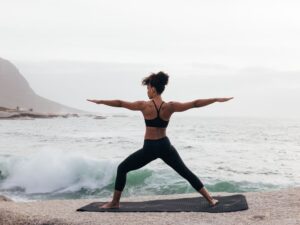
7. Tree Pose (Vrikshasana) – A grounding yoga pose that helps improve balance and focus.
Hatha Yoga Poses to Reduce Stress
How It Helps: Improves balance and concentration, reducing mental stress.
Tree Pose – This pose is also known as Vrikshasana in Sanskrit, where ‘vriksha’ means tree and ‘asana’ means posture.
To begin the Tree Pose, start by standing tall with your feet together and arms at your sides. Take a moment to find your balance and ground yourself into the earth beneath you.
Next, shift your weight onto your left foot while bending your right knee. Place the sole of your right foot on either the inside of your left thigh or calf, avoiding placing it directly on the knee joint.
Once you have found stability in this position, bring your hands together in front of your chest in a prayer-like position.
Take deep breaths as you hold this pose, imagining yourself as a strong and grounded tree. You can also focus on a fixed point in front of you to help maintain balance and concentration.
As you continue to breathe, feel the energy flowing through your body from the ground up. This pose not only improves balance and focus but also strengthens your legs, ankles, and core muscles.
To come out of the Tree Pose, slowly lower your right foot back to the ground and return to standing with feet together. Take a moment to notice any changes in your body and mind after practicing this grounding yoga pose.
Remember to practice both sides evenly for optimal benefits. The Tree Pose is a powerful reminder of our connection to nature and the importance of finding balance in our lives amidst chaos. Embrace this pose during times of stress or uncertainty to find stability and strength within yourself.
Next, let’s explore the Warrior Pose. Begin by standing with your feet hip-width apart and arms at your sides. Take a deep breath in, and as you exhale, step your left foot back about 3-4 feet behind you, keeping your right knee bent at a 90-degree angle. Ensure that your front knee does not go past your toes.
Lift both arms above your head, parallel to each other. Keep your gaze forward and engage your core muscles to maintain balance. This pose strengthens the legs, hips, and arms while also promoting focus and determination.
As you hold the Warrior Pose for several breaths, imagine yourself as a fierce warrior, standing strong and resilient amidst the chaos around you. Allow this image to give you strength and confidence.
Now, let’s move into the Tree Pose. Begin by standing with your feet hip-width apart and arms at your sides. Shift your weight onto your right foot and slowly lift your left foot off the ground, placing the sole of your foot on either your inner calf or thigh (avoid placing it directly on the knee).
Bring both hands to heart center in a prayer position or reach them above your head like branches of a tree. This pose improves balance and stability while also promoting calmness and concentration.
As you hold the Tree Pose, envision yourself as a rooted tree, firmly grounded but able to sway with the winds of change. Embrace the strength and stability that comes from being rooted in your own power.
Take a few deep breaths in this pose, feeling the energy flowing through your body. On each exhale, release any tension or negativity that may be weighing you down.
When you feel ready, slowly release the pose and switch sides. Take a moment to notice any differences between your left and right side. Embrace these differences and honor them as part of your unique journey towards inner peace and balance.
Remember, just like a tree, you are constantly growing and adapting to changes in your environment. Allow yourself to be flexible and open to new experiences as you continue on your path towards finding peace amidst chaos. Namaste.
Steps:
- Stand tall, shift weight to your left foot, and place the sole of your right foot on your inner thigh (or ankle for beginners).
- Bring hands to prayer position at your chest or extend them overhead.
- Find a steady point to focus your gaze.
Hold for 5-10 breaths on each side.

8. Cobra Pose (Bhujangasana): A Powerful Yoga Pose for Strengthening Your Core
Hatha Yoga Poses to Reduce Stress
How It Helps: Relieves lower back tension and opens the chest for deeper breathing.
Are you looking to enhance your core strength and flexibility? Look no further than cobra pose, also known as bhujangasana in Sanskrit. This simple yet powerful yoga pose has numerous benefits for both the physical body and the mind.
Cobra pose primarily targets the muscles of the back, including the erector spinae, rhomboids, and trapezius. These muscles help to support the spine and improve posture. By regularly practicing cobra pose, you can strengthen these muscles and reduce back pain.
Additionally, cobra pose stretches the chest, shoulders, and abdomen. This can help improve flexibility in these areas and counteract the daily slouching we often do from sitting at a desk all day.
Beyond its physical benefits, cobra pose also has mental benefits. As you lift your chest off the ground, you open up your heart center and create space for deep breaths. This can help relieve tension and stress in both the body and mind.
For those looking to take their practice further, there are variations of cobra pose that can increase the challenge. For example, you can lift your hands off the ground and bring them behind your back for an extra stretch in the chest and shoulders. Or, you can bend one knee and reach back to grab your foot for a deeper stretch in the quadricep muscles.
However, it’s important to listen to your body and not push yourself too far. If you feel any pain or discomfort, ease out of the pose or modify it with props such as blocks or blankets.
Incorporating cobra pose into your regular yoga practice can have numerous benefits for both your physical and mental well-being. So next time you roll out your mat, don’t forget to add this powerful pose into your flow!
Steps:
- Lie face-down, place hands under your shoulders, and keep your elbows close to your body.
- Press into your palms to lift your chest slightly off the floor.
- Keep your lower ribs grounded and shoulders rolled back.
Hold for 5-10 breaths.
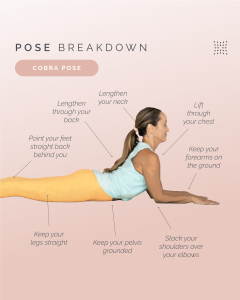
9. Seated Forward Fold (Paschimottanasana): stretches the entire body and calms the nervous system
Hatha Yoga Poses to Reduce Stress
How It Helps: Stretches the hamstrings while calming the nervous system.
Seated Forward FoldThe Seated Forward Fold, also known as Paschimottanasana in Sanskrit, is a popular yoga pose that stretches out the entire body. It is often used as a warm-up or cool-down posture before and after more intense poses.
To begin, sit on the floor with your legs stretched out in front of you. Make sure your spine is straight and your shoulders are relaxed. Slowly inhale and lift your arms up above your head, lengthening your spine even further.
As you exhale, slowly bend forward from the hips, keeping your back straight. Reach for your toes with your hands but avoid forcefully pulling yourself down. Instead, focus on keeping a long spine and stretching through the hamstrings.
If you can, try to rest your head on your shins or let it hang between your legs. Hold this position for a few breaths, feeling the stretch in your back and legs.
To come out of the pose, slowly release your hands from your feet and engage your core as you roll up one vertebra at a time. Take a few deep breaths before repeating the pose.
The Seated Forward Fold offers many benefits for both the body and mind. It helps to improve flexibility in the hamstrings, lower back, and shoulders. It also stimulates digestion and can help relieve stress and anxiety.
As with any yoga pose, it is important to listen to your body and only go as far as feels comfortable for you. Remember to breathe deeply throughout the pose and allow yourself to fully relax into it.
In addition to the physical benefits, the Seated Forward Fold can also be a powerful tool for finding inner peace. As you fold forward and let go of tension in your body, you can also release any negative thoughts or emotions. Focus on your breath and let go of any distractions, allowing yourself to find stillness and calmness within.
So next time you’re feeling overwhelmed or tense, take a few moments to practice the Seated Forward Fold. Not only will it provide physical relief, but it can also bring balance to your mind and spirit. Allow yourself to embrace the chaos of life and find peace within it through this simple yet effective yoga pose. Namaste.
Steps:
- Sit on the mat with legs extended straight.
- Hinge at your hips and reach for your feet (or shins if needed).
- Keep your back straight and relax your neck.
Hold for 5-10 breaths.
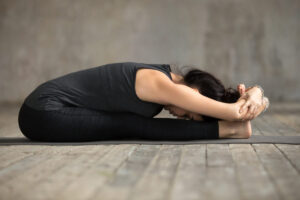
10. Bridge Pose (Setu Bandhasana): Releases Tension in the Back
Hatha Yoga Poses to Reduce Stress
How It Helps: Opens the chest and spine while reducing fatigue.
The Setu Bandhasana Pose , also known as the Bridge Pose, is a popular yoga pose that helps to release tension in the back and improve overall flexibility. This pose can be practiced by people of all ages and skill levels and has numerous benefits for both the mind and body.
To practice Setu Bandhasana, start by lying on your back with your knees bent and feet flat on the ground. Keep your arms alongside your body with palms facing down. As you inhale, lift your hips off the ground while keeping your feet firmly rooted into the mat. Press your hands into the ground to lift your chest towards your chin.
Hold this position for a few deep breaths, focusing on relaxing any tension in your shoulders and neck. This pose helps to stretch the spine, chest, and hips while also strengthening the legs and glutes.
Setu Bandhasana is known for its ability to calm the mind and reduce stress and anxiety. The deep breathing involved in this pose can help to slow down racing thoughts and bring a sense of calmness to the body. It is also believed that practicing Setu Bandhasana can improve digestion and alleviate symptoms of asthma.
This pose can be modified for beginners by placing a block or bolster under the sacrum for support. For a more advanced variation, try lifting one leg off the ground and extending it towards the ceiling.
As with any yoga pose, it is important to listen to your body and not push yourself beyond your limits. If you experience any discomfort or pain, slowly come out of the pose and take a break.
In addition to its mental and physical benefits, Setu Bandhasana also targets specific muscle groups. This pose engages your legs and glutes, helping to strengthen and tone these areas. It is a great way to incorporate strength training into your yoga practice.
To get the most out of this pose, focus on engaging your core muscles as you lift your hips off the ground. Keep your knees in line with your ankles to avoid putting strain on your lower back. Breathe deeply throughout the pose, allowing yourself to relax deeper into it with each exhale.
Remember to always approach poses with mindfulness and awareness, honoring your body’s unique abilities and limitations. With consistent practice, Setu Bandhasana can help improve your posture, increase flexibility in your spine and chest, and release tension in the hips and thighs.
In addition to physical benefits, this pose also has mental benefits. The gentle backbend can help relieve stress and anxiety as it opens up the heart center. It can also provide a sense of grounding and stability as you root down through your feet and lift up from your shoulders.
As with any yoga practice, it’s important to listen to your body and modify or skip poses if needed. If you have any injuries or medical conditions, be sure to consult with a doctor before incorporating Setu Bandhasana into your routine.
Take the time to explore this pose and see how it can benefit both your mind and body. Allow yourself to fully relax into it and let go of any tension or stress. With regular practice, you may find that Setu Bandhasana becomes a staple in your yoga practice for its ability to create balance and harmony within yourself.
Steps:
- Lie on your back, bend your knees, and place feet flat on the mat.
- Press firmly into your feet as you lift your hips and chest upward.
- Interlace your hands beneath your back for extra support.
Hold for 5-10 breaths.
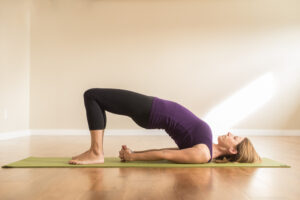
Additional Stress Relief Tips
- Practice mindful breathing exercises throughout the day.
- Use aromatherapy with calming scents like lavender.
- Spend time outdoors in nature to reset your mind.
- Create a relaxing bedtime routine to ensure quality sleep.
By combining these Hatha yoga poses and stress relief tips, you’ll feel more grounded, relaxed, and centered in no time.
Want more guidance on your yoga practice? Download our free printable yoga pose guide today! Download Here
